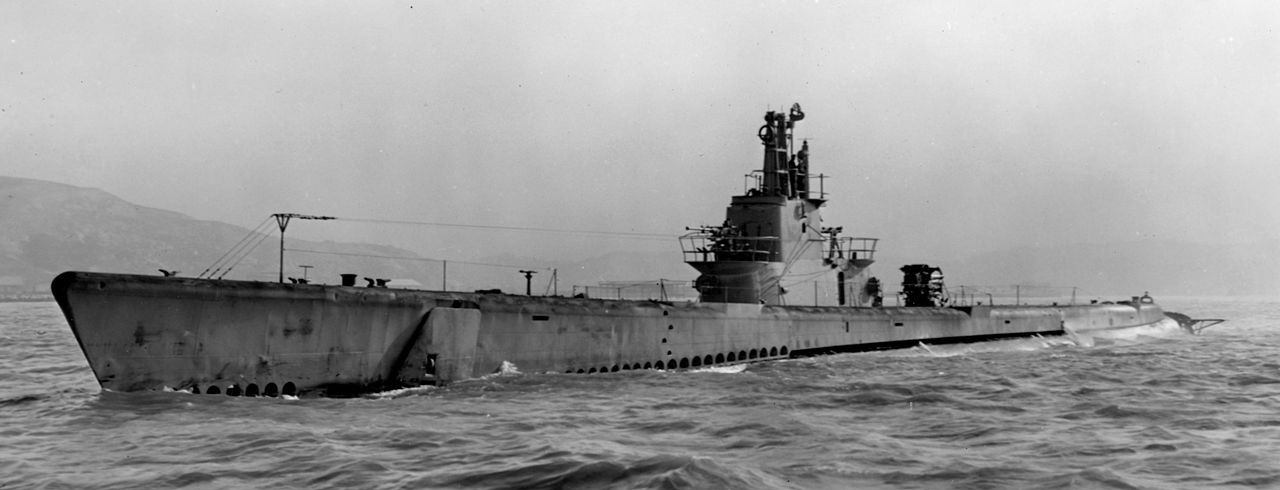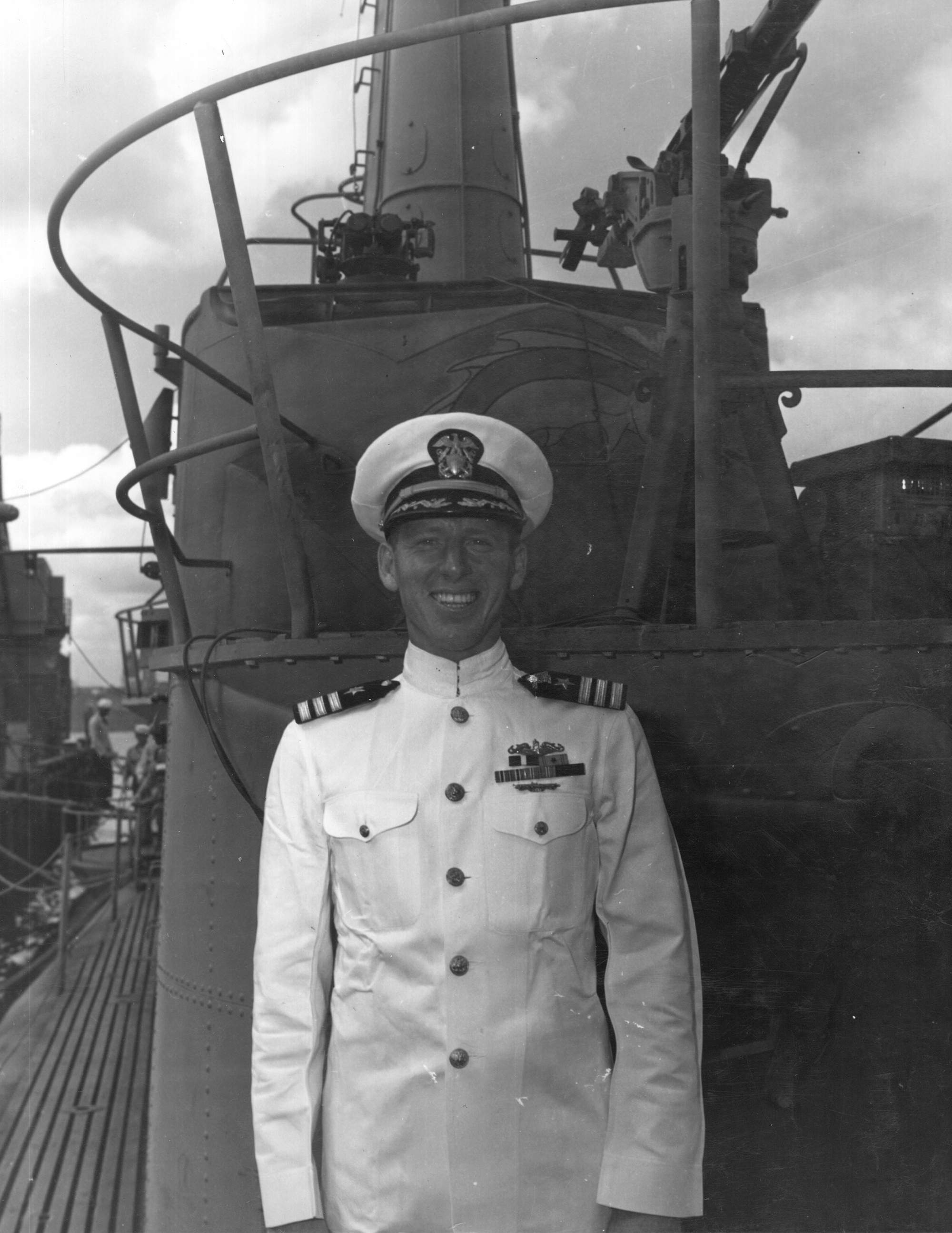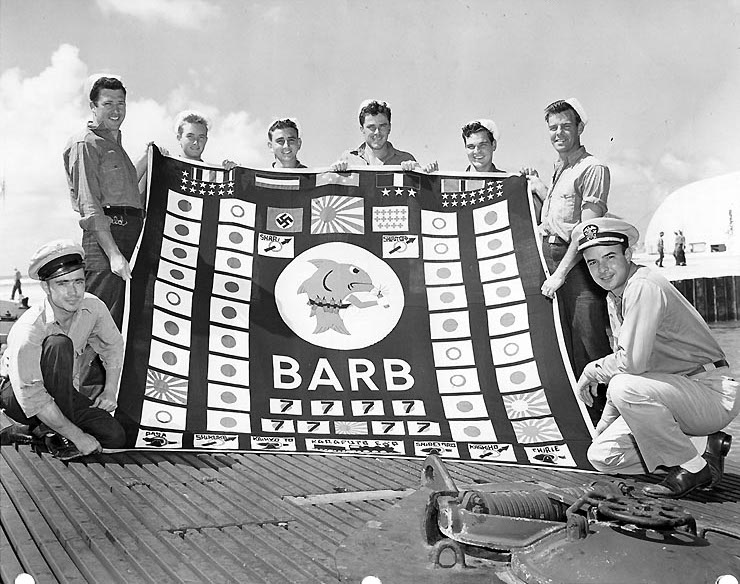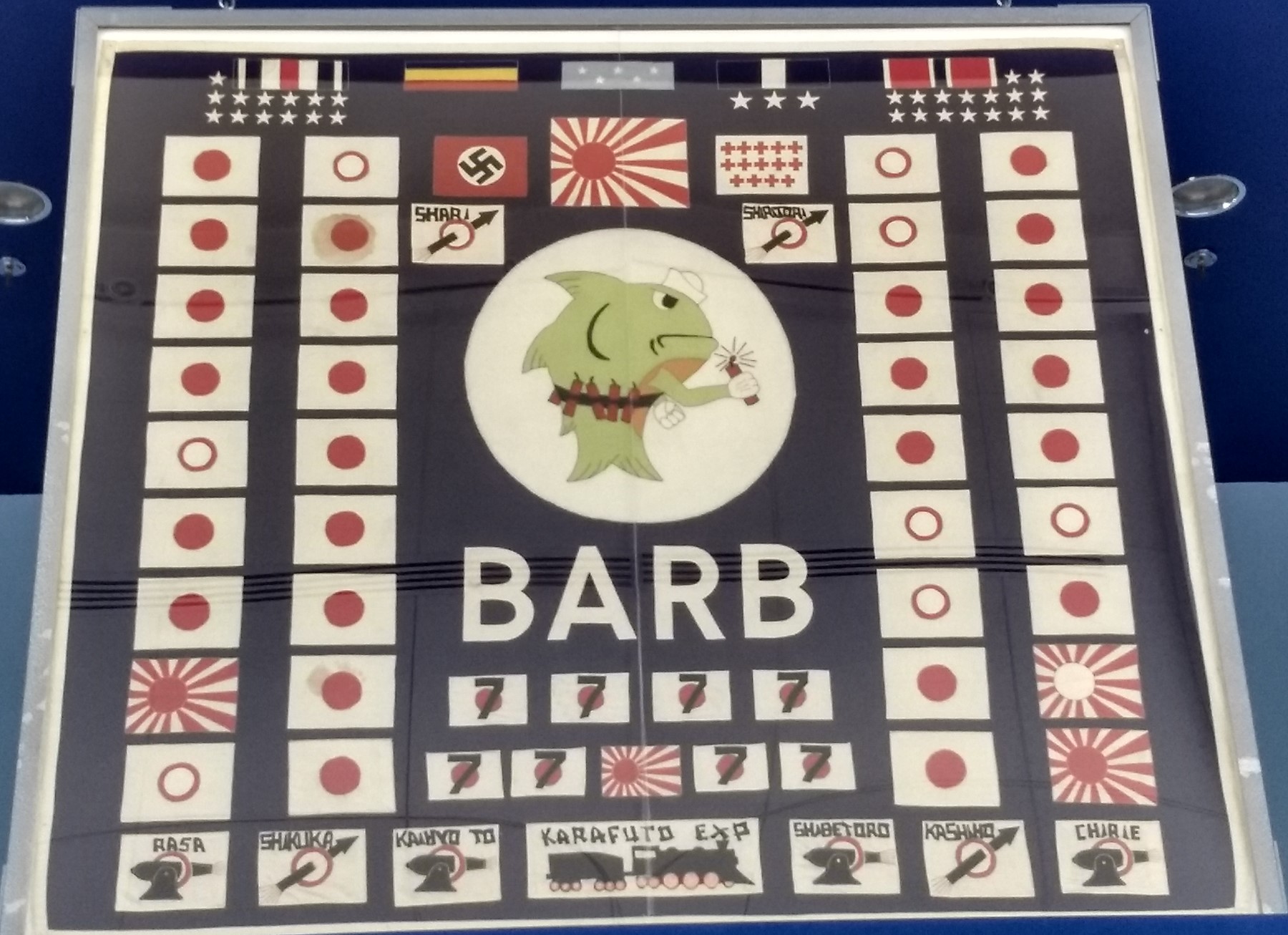One of my favorite books about WWII in the Pacific is Eugene Fluckey's Thunder Below, his account of his five war cruises as captain of the USS Barb. Fluckey was among the highest-scoring US submarine captains of WWII, on one occasion taking Barb 25 miles into water too shallow for her to dive to attack a Japanese convoy sheltering in Namkwan Harbor on the Chinese coast, then set what was probably the world record for surfaced submarine speed while escaping. As Japanese merchant traffic dwindled, he had a rocket launcher fitted, the first ever aboard a submarine, for Barb's final patrol, anticipating the land-attack missions that play a major part in submarine warfare today.

Barb
But today's tale is probably the most unique from Barb's colorful career. During the final patrol, while operating along the coast of Sakhalin island, Fluckey noticed a railway line running near the coast, and set his crew at figuring out how to destroy both line and train. There were no bridges or other obvious points of vulnerability, and neither remote detonators nor timers were practical. The solution came from Billy Hatfield, an electrician who had worked for the railroad in civilian life. He suggested that they plant a switch under the rails, which would sag as the locomotive ran over them. Fluckey immediately agreed, selecting a party of eight men1 to row ashore in the submarine's two rubber boats. They took with them one of the sub's scuttling charges,2 digging tools hastily improvised from deck plates, flashlights, pistols, survival gear in case they had to make for the Russian half of the island and steaks in case of an encounter with dogs.

Fluckey onboard Barb
The morale of Barb's crew was excellent, and everyone aboard wanted to join the party, including a Japanese prisoner they'd taken earlier in the patrol. His request was turned down, but he provided useful information about the beach patrol. The raiding party was dispatched at midnight on July 23rd, 1945, with Barb herself coming to within 950 yards of the shoreline and everyone topside being warned to keep his voice down so as not to alert the nearby inhabitants. The rubber boats, fitted with improvised radar reflectors, took 25 minutes to reach the shore, where two men stayed behind to guard them while the other 6 headed inland. They crossed a few hundred yards of reeds and scrub, as well as a highway, before arriving at the track and starting to work. The pick and shovel were soon set aside due to the noise they made, although it wasn't enough to awaken a guard discovered asleep in a nearby tower.
In the midst of the digging, none of the sabotage party noticed a blacked-out train bearing down on them until it was about 80 yards away, sending the digging team scrambling for cover. Hatfield was close enough to see the engineer peering out of the cab, and felt two shots hit him as it went by, only to discover that they were in fact the cartridges in his Mae West life preserver.3 Digging resumed, and twenty minutes later, the holes were ready and the charge planted. The rest of the party was supposed to back away when Hatfield set up the switch, but all of them mutinied and not only supervised the hookup at close range but also insisted on moving it closer to the tracks after it was live. Then it was time to return to the beach, which had been thankfully clear of Japanese patrols.

The saboteurs with Barb's battle flag, showing ships sunk and other notable events, including the train at bottom center.
Just over an hour after they arrived on the beach, the boats headed out to sea again. Fluckey had inched the Barb to within 600 yards of the coast, with only 6' of water under her keel. But as they waited for the sabotage team to return, the crew topside saw another train heading down the tracks. Fluckey broke the silence, urging them to paddle faster, and began to turn the Barb so she could easily make her escape. But there was no way they could reach the sub before the train reached the charge, and the men of the Barb got to witness their handiwork, which functioned perfectly, sending debris flying 200' in the air. Five minutes later, the boats were alongside, and soon Barb was making her way towards safety. Fluckey ordered all nonessential personnel topside to give them a chance to witness what they'd done. It was the only ground combat operation on the Japanese home islands during the war.
The Japanese were understandably baffled by what had happened, and ultimately chalked it, and most of Fluckey's other activities during the patrol, up to air attack. The information even leaked to the public via Tokyo Rose. At one point, a diagram was published showing the activities of Halsey's Third Fleet, with the arrow splitting in half. One half was pointed at Honshu, the other half at Hokkaido and Sakhalin. In fact, Halsey had gone after Honshu, while the only activity in the north was that of Barb. Halsey was reportedly furious.

Barb's battle flag, on display in the Submarine Force Museum in Groton today4
This is only one of the many tales of the Barb, and if you're interested in learning more, I again cannot recommend Fluckey's book Thunder Below highly enough. Go and read it.
1 Chief Gunners Mate Paul G. Saunders, USN; Electricians Mate 3rd Class Billy R. Hatfield, USNR; Signalman 2nd Class Francis Neal Sever, USNR; Ships Cook 1st Class Lawrence W. Newland, USN; Torpedomans Mate 3rd Class Edward W. Klingesmith, USNR; Motor Machinists Mate 2nd Class James E. Richard, USN; Motor Machinists Mate 1st Class John Markuson, USN; Lieutenant William M. Walker, USNR. ⇑
2 This is exactly what it sounds like, an explosive charge intended to blow up the submarine if needed. ⇑
3 So called because of the resemblance to the busty film star when the vest was activated. ⇑
4 My photo. ⇑

Comments
Thunder Below is a ridiculously fun book, it reads like overly exuberant Star Trek fan fiction.
A very cool story! This was dramatized and discussed on the Smithsonian Channel show Hell Below (which is just an amazing show in general)
Here's a clip about the rocket firing
A bit before even my time, but Tommy Dykers produced an early homage in the late 1950's to such exploits.
Here is the episode on the Barb: https://youtu.be/ywf8iwmCyMQ
Cheesy by today's production standards and budgets, but he told the stories of many of boats, crews, and skippers. On one he even had Moon Chapple as a guest.
If nothing else the first 15 seconds are worth a view.
D'Oyly Hughes, ill-fated captain of HMS Courageous in 1940, was decorated in 1915 for swimming ashore to blow up a railway carrying Turkish supplies to Gallipoli, when he was second in command of RN sub E11 in the Sea of Marmara. Don't know if he bagged any actual trains though.
Sadly as his later career showed he had more courage than sense or command ability.
Sadly as his later career showed he had more courage than sense or command ability.
I read a book on military disasters a while ago. It was a fairly common theme that a lot of times someone would, as a junior officer, display great physical courage and get promoted. Then, as a more senior officer, they would display great physical courage and get their command destroyed.
More generally, the decisions that resulted in the disaster were often shown to be paralleled in the earlier career of said officer. But what was a correct decision for a lieutenant or captain worked out badly for a colonel or general.
(Of course, the book, by its very nature, only examined the cases where it all went horribly wrong.)